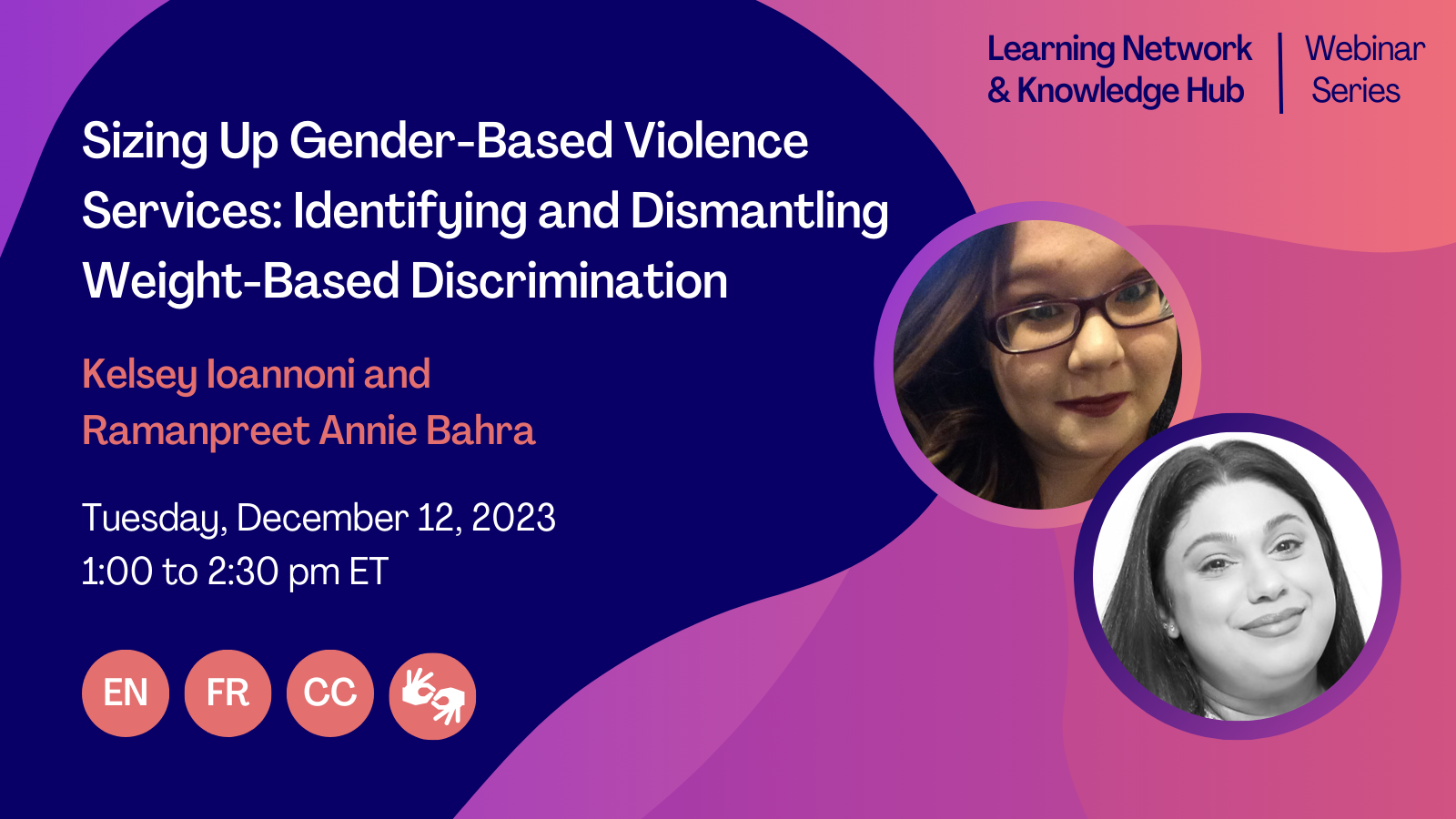Our Work
.
Experiences of Weight-Based Discrimination and Violence
 This infographic shares information about what weight-based discrimination is and how it intersects with intimate partner violence through an interactive example.
This infographic shares information about what weight-based discrimination is and how it intersects with intimate partner violence through an interactive example.
December 2023
Weight-based discrimination consists of stereotypes against people who are perceived as “fat” that harmfully and inaccurately portray them as lazy, unhealthy, or lacking self-discipline. Sometimes this is referred to as fatphobia or sizeism.
Weight-based discrimination intersects with and compounds various forms of violence including intimate partner violence. An intimate partner may target their partner’s weight as a tactic of power and control. For instance, a partner may ridicule a survivor’s weight and/or restrict their food.
Since weight-based discrimination is normalized, survivors may face it even when seeking help from individuals and services.
Consider Sally’s Experience:
Sally’s partner, Riley, told her how lucky she was to be with him because she was “so fat.” He often threw out her food or limited her meal portions. Riley started to hit Sally and locked her out of the house telling her to “go for a walk.”
Sally’s family often witnessed Riley’s behaviour and would reassure her that he was just concerned about her health. They encouraged her to try dieting since “she would be so beautiful if she just lost a few pounds.”
Sally went to see a doctor after Riley pushed her down the stairs and she began having intense migraines. The doctor asked if she tripped since she “doesn’t move around a lot” and said the real concern was getting Sally’s weight “under control.”
In what ways was Sally’s experience of intimate partner violence compounded by weight-based discrimination?
Some of the ways that Sally’s experience of intimate partner violence was compounded by weight-based discrimination include:
- Sally’s partner engaged in emotional abuse often targeting’s Sally’s weight and saying that no one else would want to be with her because of the way she looked.
- Sally’s partner coercively controlled Sally’s food intake by throwing out her food and limiting her portions. The act of throwing out her food may also have economic implications for Sally as she needs to replace that food.
- Sally's partner exerted control over her autonomy and increased the risk of further harm by locking her out of the home and denying her access to money, her phone, warm clothing, and safe space. He used a tactic of control that targeted her weight by telling her she should "go for a walk."
- Sally was isolated from her family who did not believe her and see the weight-based discrimination Sally faced as a form of intimate partner violence.
- Sally’s family imposed gendered expectations of weight upon Sally (e.g., thin women are beautiful) capturing how weight-based discrimination and sexism intersect in attempts to control women’s bodies.[1]
- The doctor that Sally saw denied her adequate healthcare as her concerns were shut down in her appointment and the doctor focused exclusively on Sally’s weight. As well, the doctor closed an opportunity for Sally to disclose the violence and seek help.
Learn more about how weight-based discrimination and violence intersect and how we can create size-inclusive supports for survivors of gender-based violence in our upcoming Webinar:
[1] Boswell, R. G., & White, M. A. (2015). Gender differences in weight bias internalisation and eating pathology in overweight individuals. Advances in Eating Disorders (Abingdon, U. K.), 3(3), 259–268. https://doi.org/10.1080/21662630.2015.1047881
All our resources are open-access and can be shared (e.g., linked, downloaded and sent) or cited with credit. If you would like to adapt and/or edit, translate, or embed/upload our content on your website/training materials (e.g., Webinar video), please email us at gbvln@uwo.ca so that we can work together to do so.







